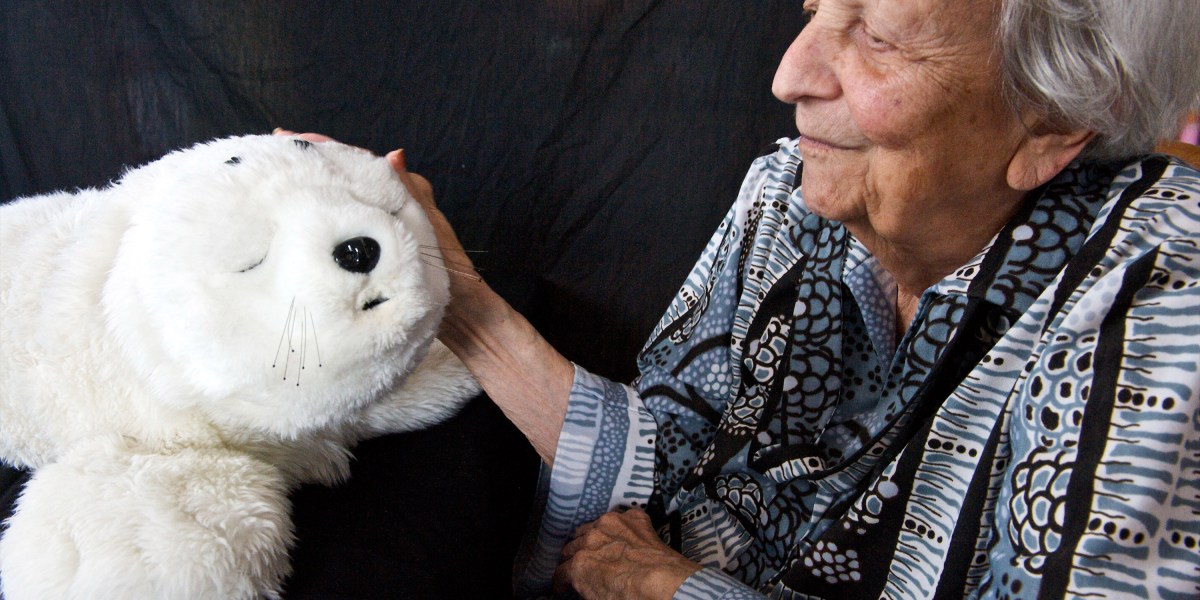That’s how I discovered the Golden Pup from Joy for All. It cocks its head. It sports a jaunty red bandana. It barks when you talk. It wags when you touch it. It has a realistic heartbeat. And it’s just one of the many, many robots designed for people with Alzheimer’s and dementia.
This week on The Checkup, join me as I go down a rabbit hole. Let’s look at the prospect of using robots to change dementia care.

As robots go, Golden Pup is decidedly low tech. It retails for $140. For around $6,000 you can opt for Paro, a fluffy robotic baby seal developed in Japan, which can sense touch, light, sound, temperature, and posture. Its manufacturer says it develops its own character, remembering behaviors that led its owner to give it attention.
Golden Pup and Paro are available now. But researchers are working on much more sophisticated robots for people with cognitive disorders—devices that leverage AI to converse and play games. Researchers from Indiana University Bloomington are tweaking a commercially available robot system called QT to serve people with dementia and Alzheimer’s. The researchers’ two-foot-tall robot looks a little like a toddler in an astronaut suit. Its round white head holds a screen that displays two eyebrows, two eyes, and a mouth that together form a variety of expressions. The robot engages people in conversation, asking AI-generated questions to keep them talking.
The AI model they’re using isn’t perfect, and neither are the robot’s responses. In one awkward conversation, a study participant told the robot that she has a sister. “I’m sorry to hear that,” the robot responded. “How are you doing?”
But as large language models improve—which is happening already—so will the quality of the conversations. When the QT robot made that awkward comment, it was running Open AI’s GPT-3, which was released in 2020. The latest version of that model, GPT-4o, which was released this week, is faster and provides for more seamless conversations. You can interrupt the conversation, and the model will adjust.
The idea of using robots to keep dementia patients engaged and connected isn’t always an easy sell. Some people see it as an abdication of our social responsibilities. And then there are privacy concerns. The best robotic companions are personalized. They collect information about people’s lives, learn their likes and dislikes, and figure out when to approach them. That kind of data collection can be unnerving, not just for patients but also for medical staff. Lillian Hung, creator of the Innovation in Dementia care and Aging (IDEA) lab at the University of British Columbia in Vancouver, Canada, told one reporter about an incident that happened during a focus group at a care facility. She and her colleagues popped out for lunch. When they returned, they found that staff had unplugged the robot and placed a bag over its head. “They were worried it was secretly recording them,” she said.

